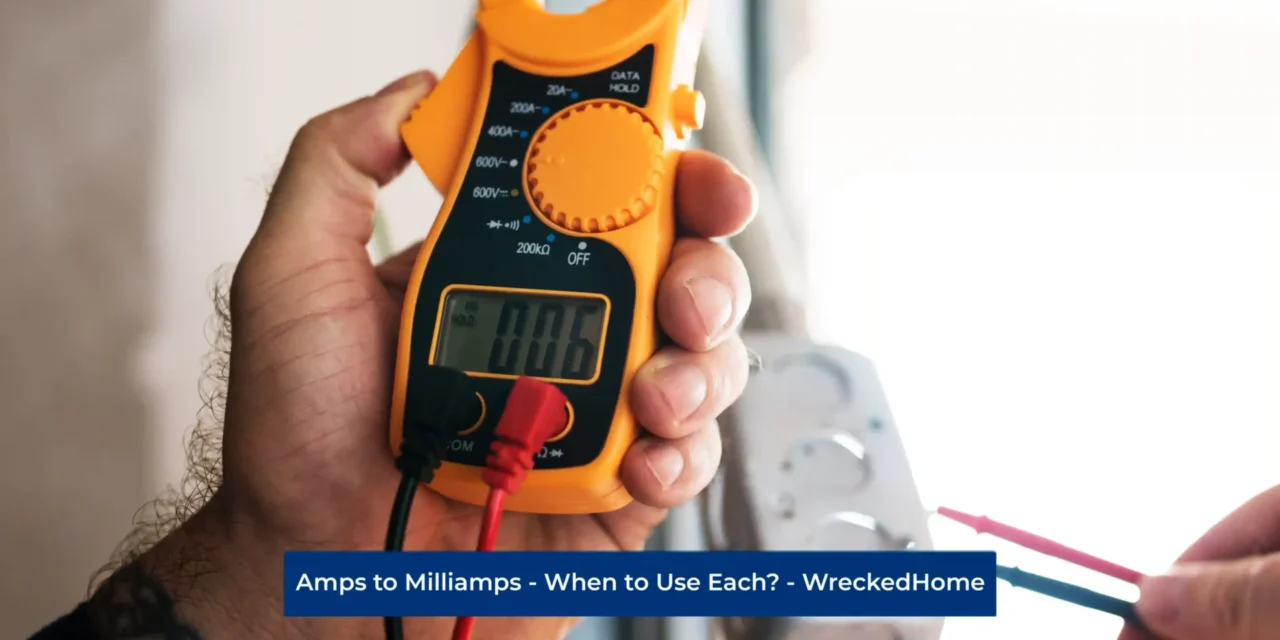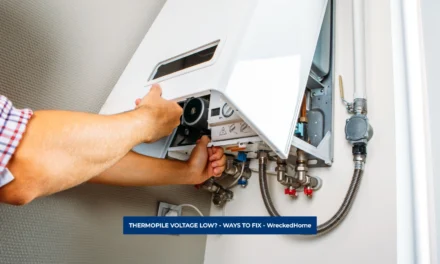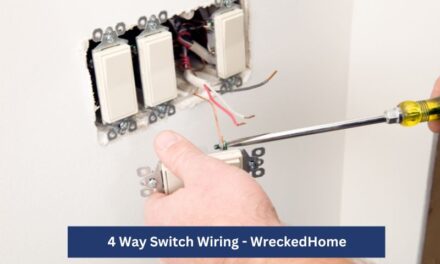Amps and milliamps are the famous electric current units in the world. Whether you are an electrician or a homeowner embarking on DIY projects, we believe that every person should be familiar with amps and milliamps. Additionally, it is helpful to know how to convert amps to milliamps.
This is because these electric units are used in different applications. So, familiarizing yourself with these terms will save you time and energy. So, let’s introduce you to these electric current units.
What are Amps?
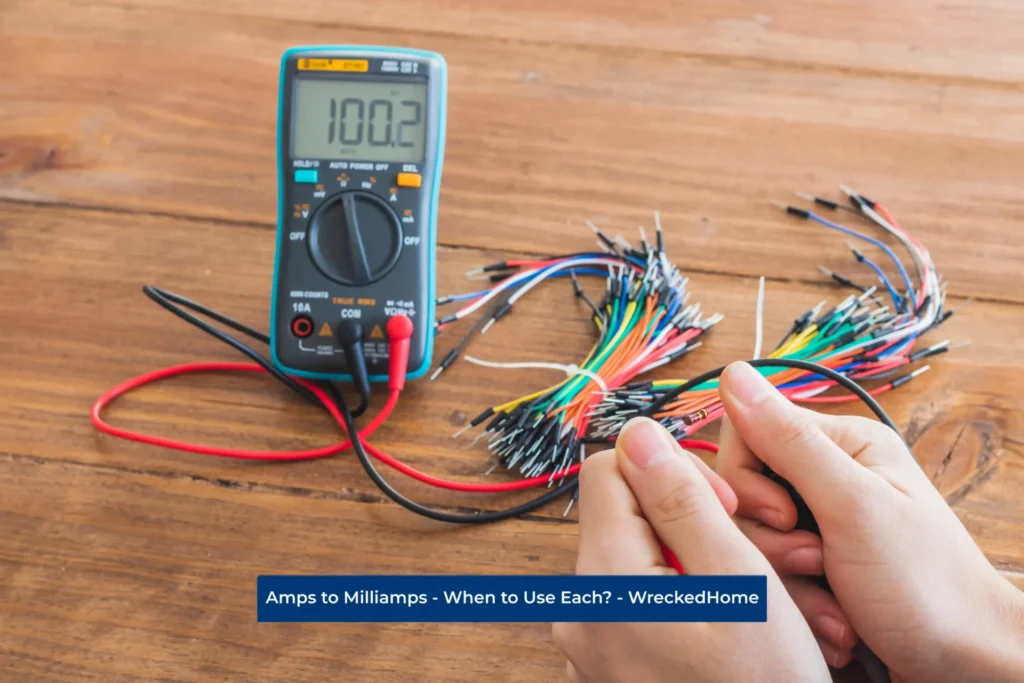
Amps are known as Ampere, and the symbol is A. So, you will express one ampere as 1 A.
In the International System of Units (SI), it is known as the basic unit of electric current. This means it measures the amount and rate of electricity in an electric circuit. It is equal to the flow of one coulomb per second.
It is named after the French mathematician and physicist, Andre-Marie Ampere. When it was first introduced, it was defined as the one-tenth of the unit of electric current in the centimeter-gram-seconds of the unit.
Before 2019, it had a different definition from today. It was defined as the constant current that produced a force equal to 0.0000002 newtons. It produced this current when passed through two parallel and straight conductors. The following conditions had to be met: They were distanced one meter away, present in the vacuum, and had less circular cross-sections.
The definition was one ampere equals one coulomb of charge passing through a specific point in one second. But, this definition required a lot of precision which was difficult to find.
This definition included meter, SI kg, and second which needed to be found before ampere could be defined.
Now, it has a different definition. It is the electric current corresponding to the flow of 1/ (1.602 176 634 × 10–19) elementary charges per second. So, this definition only depends on the seconds.
There is one drawback of this definition, however. There is no exact reference to vacuum permittivity, permeability, and impedance of free space. So, this definition can be subject to experimental error.
What is Milliampere?
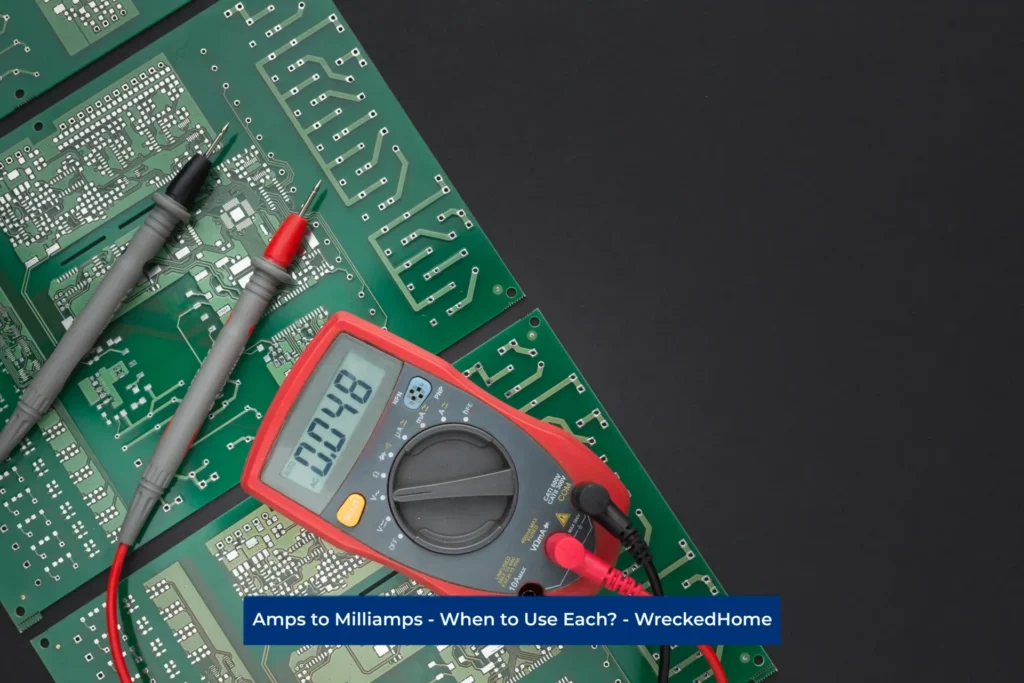
The milliampere is the smallest unit of the electric current flowing through an electric circuit. The symbol of it is mA. This means that one milliamp is represented as 1 mA.
This electric unit is related to ampere. The prefix “milli” is defined as one-thousandth. So, it is defined as the one-thousandth part of the ampere that is present in an electric current.
It means that 1 A is equal to 1000 mA. And, 1 mA is equal to 0.001 A.
This unit is convenient for measuring small electric currents and gives precise measurements for the electric current of small gadgets that ampere can’t cover.
That’s why it is important to learn how to convert amps to milliamps. This conversion will save you from a lot of hassle when calculating the electric current of daily usage products.
How to Convert Amps to Milliamps?
The conversion of amps to milliamps is quite easy. There is only one formula that you can apply to convert amps to milliamps within seconds.
The formula is:
mA= A × 1000
Now, let’s see how to apply this formula to convert amps to milliamps.
Example 1
You need to convert 2.5 A to milliamps. For it, follow the mathematics below:
mA= 2.5A × 1000
mA = 2500mA
Example 2
Now, let’s suppose you want to convert 5 A to milliamps.
mA= 5 A × 1000
mA= 5000mA
Example 3
Let’s suppose you have a solar charge controller that has a 40 amp power rating. You need to convert amps to milliamps for precise measurement. So, you will do this calculation:
mA= 40A× 1000
mA= 40,000mA
We think these three examples are enough to show you how to convert amps to milliamps. This formula will help you in gaining the precise current measurements of your electric devices.
There is a table relating the amps to milliamps conversion.
Visit our store for 10% off our Save Home Energy products here.
| Amps | Milliamps |
| 0.01 A | 10 mA |
| 0.1 A | 100 mA |
| 1 A | 1000 mA |
| 2 A | 2000 mA |
| 5 A | 5000 mA |
| 10 A | 10,000 mA |
| 15 A | 15,000 mA |
| 20 A | 20,000 mA |
| 50 A | 50,000 mA |
| 100 A | 100000 mA |
| 1000 A | 1000000 mA |
Just like converting amps to milliamps is a straightforward but important calculation, converting milliamps to amps is also crucial. You need a formula to do this conversion too.
How to Convert Milliamps to Amps?
The formula for converting milliamps to amps is:
Amps = Milliamps ÷ 1000
Let’s see some examples to understand it.
Example 1 of Amps to Milliamps
You need to convert 3000 mA to amps. So, you will apply this formula as:
Amps = 3000mA ÷ 1000 = 3A
Example 2: of Amps to Milliamps
Let’s suppose there is a battery which is providing you 5000 mA in one hour. You need to convert it to amps. So, you will do the calculation:
Amps = 5000mA ÷ 1000 = 5A
Example 3: of Amps to Milliamps
Suppose there is a power station which provides 50,000 mA per hour. You need to find out how much ampere it is providing you per hour. So, you will apply the formula:
Amps = 50,000mA/h ÷ 1000 = 50A/h
This conversion helps you work with electrical currents more practically and helps you remain consistent in your calculations with electrical work.
There is a conversion table for this:
| Milliamps | Amps |
| 1 mA | 0.001 A |
| 2 mA | 0.002 A |
| 5 mA | 0.005 A |
| 10 mA | 0.01 A |
| 20 mA | 0.02 A |
| 30 mA | 0.03 A |
| 40 mA | 0.04 A |
| 50 mA | 0.05 A |
| 100 mA | 0.1 A |
| 200 mA | 0.2 A |
| 300 mA | 0.3 A |
| 400 mA | 0.4 A |
| 500 mA | 0.5 A |
| 600 mA | 0.6 A |
| 700 mA | 0.7 A |
| 800 mA | 0.8 A |
| 900 mA | 0.9 A |
| 1000 mA | 1 A |
| 1500 mA | 1.5 A |
You learned how to convert amps to milliamps, and milliamps to amps. Now, lets explore more.
How to Find Amps in a Current Circuit?
You may want to know how to gain the value of ampere from a current circuit. Let’s suppose, you have a solar kit and you want to know the ampere value of it. You want to know how much electricity it is providing to you per hour.
So, you will apply Ohm’s law to find the value of ampere in your electric circuit. The formula of law is:
I = V/R
I is the current value which is ampere in this law. V stands for voltage and R stands for resistance. It means you need to divide the wattage by the voltage to find the Ampere value of a specific current circuit.
Now, what is the importance of the Ampere and Milliampere? Why do we need to find their values, and where they are applicable? Let’s see the answers.
Importance and Usage of Ampere
Having knowledge about the ampere can save you from different electrical current accidents in your households or workplace.
Every piece of electric equipment needs to draw a certain amount of ampere from a circuit to operate. On the opposite side, they also put an ampere load on your electric circuit. You need to make sure that your equipment doesn’t demand more electric current than your circuit can give.
For example, all commercial food service equipment has the rating “continued use” on it. So, the amps load of such types of equipment shouldn’t exceed 80 percent of the current circuit breaker rating.
If you are a homeowner learning how to install a three-way Dimmer switch in your home, it is imperative that you understand this. If you do not understand the basics, you can get shocked or ruin your home’s electrical system.
If you have a 12 A circuit, you need to make sure that your continued use of equipment is 10 A or lower as well.
This is why ampere knowledge is so important. It saves you from buying the wrong types of equipment that can have a harmful impact on your circuit.
Now, where can you use ampere value.
- You can use ampere value or ampere-per-hour value to understand the battery capacity of a power station. For example, a fully charged 20 ampere-per-hour power station can provide you with 20 ampere power in one hour. Or, it can provide 5 amps of power in 4 hours.
- It is used to measure the current value of large products such as refrigerators, kettles, electric fires, air conditioners, etc. It tells us how much current they are taking from the electric circuit.
- You can measure the capacity of solar batteries or other solar products through it. If there is a high ampere value, your batteries will last longer.
So, this is where ampere is used and its importance. Now, let’s discuss the importance of milliamps.
Importance and Usage of Milliamps
You need to convert amps to milliamps for small applications. The milliamp value will give you the precise measurement of the electric current of your devices. It also helps you in finding your battery capacity.
For different applications, milliamps per hour is used to tell you how much power the application will provide to you in an hour. In the case of batteries, this value will tell you how long your battery can last.
It can be used in different applications.
- It can be used to measure the electric current of smartphones and laptop batteries. For example, if a battery is 3000 mA per hour, it means it can supply this amount of energy in one hour.
- You can find the current of light-emitting diodes (LED) with the help of milliamps.
- It is used to measure the capacity of AA batteries.
- It is used as a unit of measurement on different devices such as galvanometers, digital multimeters, and ammeters.
- It is also used to power current loops. These are devices used to measure temperature, pressure, and pH.
- You can convert amps of large appliances into milliamps to get a precise idea of their current usage and capacity.
So, this is all about amps and milliamps. What are your thoughts about them? Do share your opinions in the comments section.
For any repairs, installations, builds, or questions; We recommend you to hire a professional. Find A Pro Near You Here!

